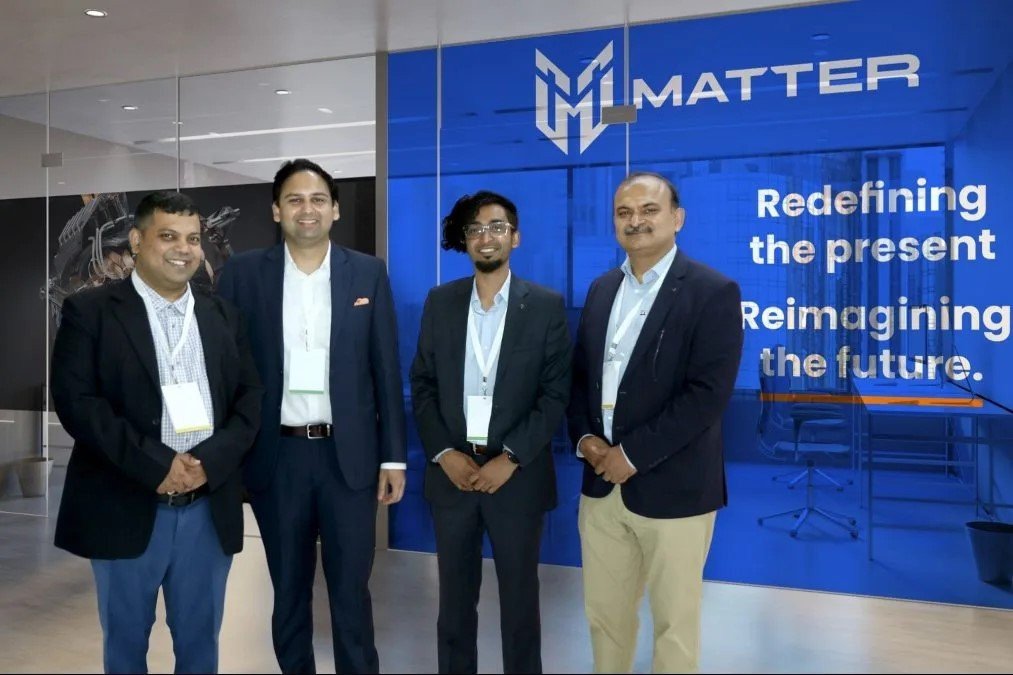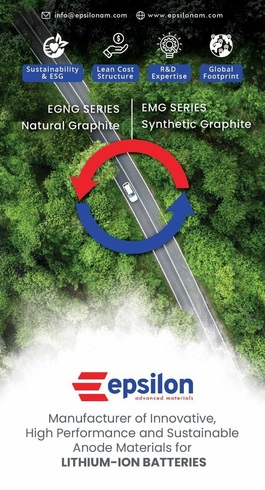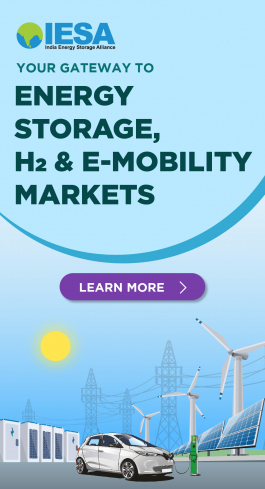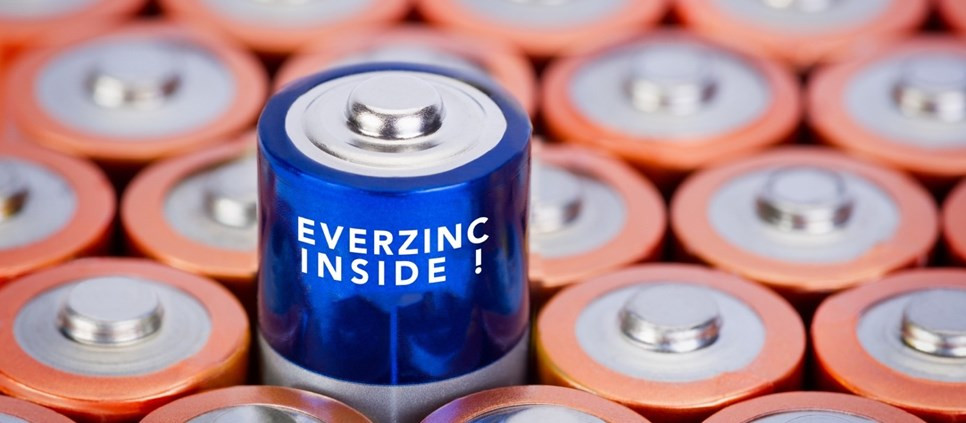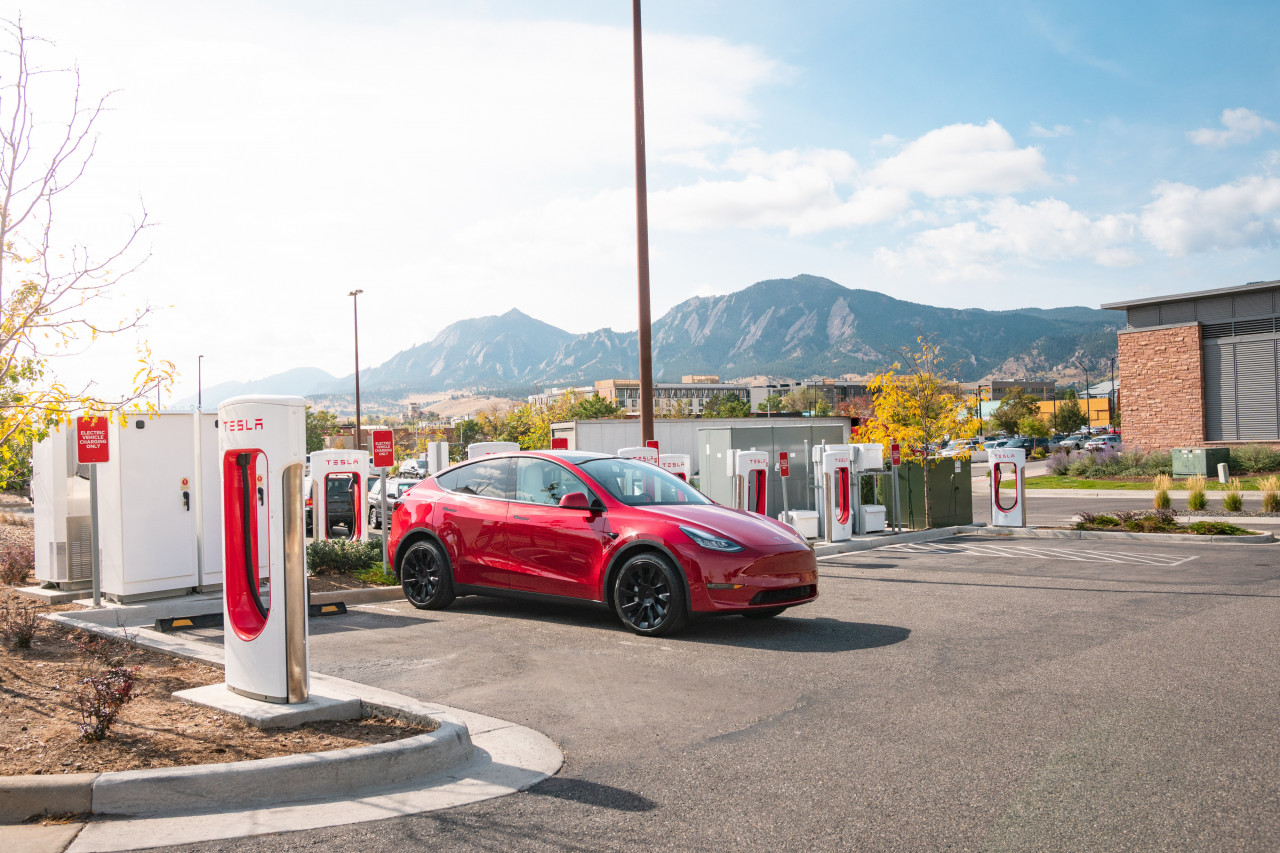12 minutes reading time
(2393 words)
India’s path to green mobility is merely a matter of time
MATTER - a technology startup with a goal to accelerate sustainable electric technologies - recently launched India's first advanced all-electric geared motorbike. Designed and engineered in-house from the ground-up, the bike's consumer-centric approach focuses on safety, reliability and performance.
Mohal Lalbhai, Founder & CEO – MATTER, shares insights of the journey and the drive behind his team's vision to shift India to electric.
Heartiest congratulations on the launch of India's first electric motorbike with a manual gearbox. It must be an exciting time for you and for MATTER. How does it feel?
It is very exciting – it took four years of hard work by the team since a lot of specifications had to be taken care of. Eventually, when we could showcase this product to the world, it was an unbelievable moment, and the response we received was phenomenal.
Tell us about the journey that went into building MATTER - about the idea, your team and what exactly goes into building an exceptional product?
The journey started for us in 2018, when the founders met for the first time, all of us from different backgrounds - technology, design, operations and consumer. Back then the world was already moving towards e-mobility and we were not really seeing the kind of traction in any space and particularly not in the e-2W space. So, we came together to understand the e-2W space at the time and what we could undertake together to improve it.To accelerate India towards an electric future we started MATTER in January 2019. We also started our journey of working with consumers, dealers and partners in the eco-system to understand exactly what difficulties the consumer was facing in converting to electric. With that understanding we spent most of 2019 in conceptualizing the product, putting the team in place and getting the first pieces of technology together. For us the core idea was to build a product that India wants, one that India was desperately in need of. That was the reason we decided to carry out complete vertical integration.
It was still 2019 and we decided we would incorporate all the key elements that differentiate an internal combustion vehicle into an e-2W vehicle. All those elements we would build from the ground up to deliver something that the consumer truly wants, and at a price point that works for the consumer. There are some products that are fantastic as a product per se, but the price point is so out of reach of the average consumer that you really will not see the kind of adoption that we are looking at. We want to shift India to electric and so decided to undertake the manufacture of all these pieces in-house.
In 2020 we were hit by the pandemic like everyone else. Luckily, the way we had set up our systems and processes we were able to continue our work from home. Building a hardware product is quite difficult, but we were able to manage our way through the pandemic. The result was that right after the lockdown restrictions were lifted in June 2020 we were able to bring out our first prototype. Having accomplished that, we had another round of interactions like we did in 2019 with the consumers and the eco-system partners. This is when we got the first feedback on which we based our current product. This is the point when we realized that consumer aspirations and the road that we were on, were perfectly aligned.
Going into 2021 we did a lot of fine tuning and testing on the vehicle. After test-running thousands of kilometers through 2021 till 2022, we decided we were in a position to start production of the product. That is the journey for 2022, when our preparedness was converted into a launch of the product last week.
The most talked about feature in your product is the hyper-shift sequential manual transmission in an e-2W. What is the significance of this technology to the users and how exactly is it transformative to the e-2W landscape in India?
Any electric motor has two key elements that drive the overall performance of the system: the first is the manner in which the torque is delivered to the wheel, and the second is the efficiency in terms of when the machine is ready to operate. We wanted to get the best of both worlds - we wanted to make the vehicle as efficient as possible from the powertrain perspective at the same time delivering an experience to the user that was very familiar to what they are used to - all with the benefit of going green. It was the amalgamation of both these that led us to the innovation and development of the hyper-shift gear box.
At the end of the day, having complete control of your powertrain, the feeling of downshifting when you want to overtake someone, is the feeling that truly captures the essence of a motorbike. That is what we wanted to embody into the product.
A number of manufacturers in India have opted for e-scooters; is it why you perhaps chose a different path and came up with a geared electric motorbike?
India today runs on two wheels to the extent of 65 percent, and yet has seen less than half a percentage of e-2W penetration. This is what we recognized was the right segment to enter with as our first product, as it fits in with our vision of accelerating India to an electric future and offers the reach we are looking at.
How different and sophisticated is MATTER motorbike's power pack matterEnergy 1.0? What went into its development?
India is a country with vast climatic variations from -10 to + 50ºC, from sea level to 3000 meters altitude, from under 5 percent humidity to 95 percent humidity. For a product to survive all of these conditions - the thermal management inside the battery pack, for the electronics in the vehicle and the thermal management of the motor - for all these separate issues we wanted a single solution.
The simplest solution we devised was to incorporate liquid cooling as a completely closed-circuit system on the vehicle. This has been for us the biggest innovation in this space – we have not come across many who have been able to accomplish liquid cooling in a two-wheeler. The biggest challenge has been miniaturization of this technology and this we have been able to achieve for the product, with our matterEnergy 1.0 battery.
Having explained the advantage of liquid cooling, could you touch on specs such as speed, charging time, range, etc.?
The first benefit of liquid cooling technology goes like this: imagine a scenario where the bike is parked in the hot afternoon sun in a hot city. Every part, from battery pack, motor, electronics are acting like an oven since all are in sealed containers. There is no movement, hence no fluctuation of temperature. When someone gets on the vehicle to ride out, it will lead to the system triggering some kind of safety functionalities, either reducing speed or some performance characteristic. But due to our liquid cooling technology and the independent ability to control it, this will not be the case with the MATTER motorbike. Even though parked in the noon sun for two hours, when you want to ride this vehicle out, it will act exactly the same as it would when parked in cool conditions.
The MATTER motorbike comes with a 10.5 kW motor and a standard 5 kWh battery pack, which amounts to a 125 to 150 km range. As for charging, since our idea is aimed at mass adoption of the product, we have really re-thought how charging could be a problem.
The MATTER motorbike is charged though a simple 5 Amp plug. Basically, this is your bedside plug that delivers 5 Amps and through which you charge your smart phones and laptops. From a zero to 100 it takes about five hours to charge. This amounts to a 125 to a 150 km of range even on that simple 5 Amp socket. You will get about 30 km for an hour of charging on the standard 5 Amp socket. There is also the option for fast-charging on the product, and it gives one minute of battery capacity per minute in terms of charging.
MATTER has its state-of-the-art R&D facility in Ahmedabad. You also spoke of vertical integration of the supply chain; tell us about the R&D capabilities, localization, and strategies, especially with regards to critical components like battery packs and the electronics aspects.
In terms of vertical integration, there is not a single part of the bike, which has not been designed by MATTER. That is where we have been able to work with the best suppliers in the country, work at their location and then bring them in. As far as the key elements of the overall powertrain are concerned, we manufacture our own motor, our own power-pack – which is both battery pack and the electronics. We are handling the complete manufacture of the battery and motor in-house along with the vehicle.
For the rest, the supplier ecosystem that exists in the country suffices to procure the components from within the country itself. There are only three items which we are forced to import due to lack of availability in India and these are cells, magnets and semi-conductors. Other than these three, everything else is locally sourced, locally designed and manufactured to make a truly Indian product. Having said that, we are looking forward to obtaining locally manufactured cells with the efforts the government has put in with the PLI scheme to promote battery production in India.
Every discussion on e-2Ws invariably touches on the safety and standards aspect. Could you elaborate on the precautions taken for fire-safety for your product?
When one looks at a battery pack, the cells are the most standardized components available since they have been manufactured for the better part of a decade and there is not a great differentiation in technology and the existing quality. The biggest challenge is how these cells are assembled, what safety functions are incorporated both from an electrical and mechanical standpoint to deliver the required power output while still maintaining safety.
Here we build our own BMS in-house, and that BMS is very sophisticated and runs advanced algorithms on the cells to ensure that under any circumstances the BMS is able to ensure complete safety and integrity of the battery pack; it also delivers the right kind of quality and reliability which the consumer wants when riding.
Apart from this, the liquid cooling technology was originally conceptualized to make sure there were no runaway incidents and there is perfect thermal stability on the battery pack. We have gone a step further and ensured there is enough material inside the battery pack, which in case of accidents or other cases will not allow the battery pack to catch fire.
All of this when it is put together in a package, that is the part where the engineering truly has to think outside the box and be innovative, because on a two-wheeler there is limited space in terms of packaging these complex systems into a very small volume. That is where for us safety, security, reliability and performance are the top criteria when looking at engineering design; we have gone above and beyond what is required by regulation.
Stringent regulations have kicked in recently and the government is doing an excellent job in ensuring that whatever is delivered on the road is safe and secure. The products we are building are a couple of generations ahead of the regulations in making sure that safety and security is always maintained.
What pricing are you considering? Are you looking at premium or mid-premium buyers?
We have not yet announced the pricing of the vehicle and plan to do so when we take orders in the first quarter of 2023 between January and March. Before that the variants, their pricing and all the features will be made known. There is much more available in the vehicle than what we announced in the keynote. We would prefer not to announce pricing without showcasing all the features we are offering.
Talking about the e-mobility sector, are you considering energy storage systems as well, and what are your technological and market strategies for the energy storage segment?
We definitely have products in the energy storage segment as well. It all started back in November of 2020, when we realized that our battery technology had alternate use-cases in stationary applications as well. That was the time a separate division of MATTER, an energy storage subsidiary called MATTEREnergy was formed. It caters primarily to energy storage applications.
Seeing the way India is moving forward, the number of investments happening in this space, particularly in the renewable energy space, there is a significant demand being created for back-up systems to regulate the grid, regulate power supply and the availability of power. We have created products for these requirements and there are products that are already out in the market from MATTEREnergy, such as inverters in homes, backup systems installed for telecom applications and others going into grid management applications.
For MATTEREnergy we do as low as a kW or kW-and-a-half and go all the way up to a containerized solution holding about 2 MWh of power, and everything in between. These are low voltage systems for lower side capacities; for higher capacities we reach the 1000 volt and above class of products where the efficiency and overall performance of the system is well controlled. Again, because we are in India the containerized solutions are going to be sitting out in the baking sun in remote places. Here the safety, security, the reliability of the systems has been taken into very serious account in terms of developing it.
(This interview was conducted for Emerging Tech Radio podcast by host Netra Walawalkar. Transcribed and edited by Kathy Priyo.)


